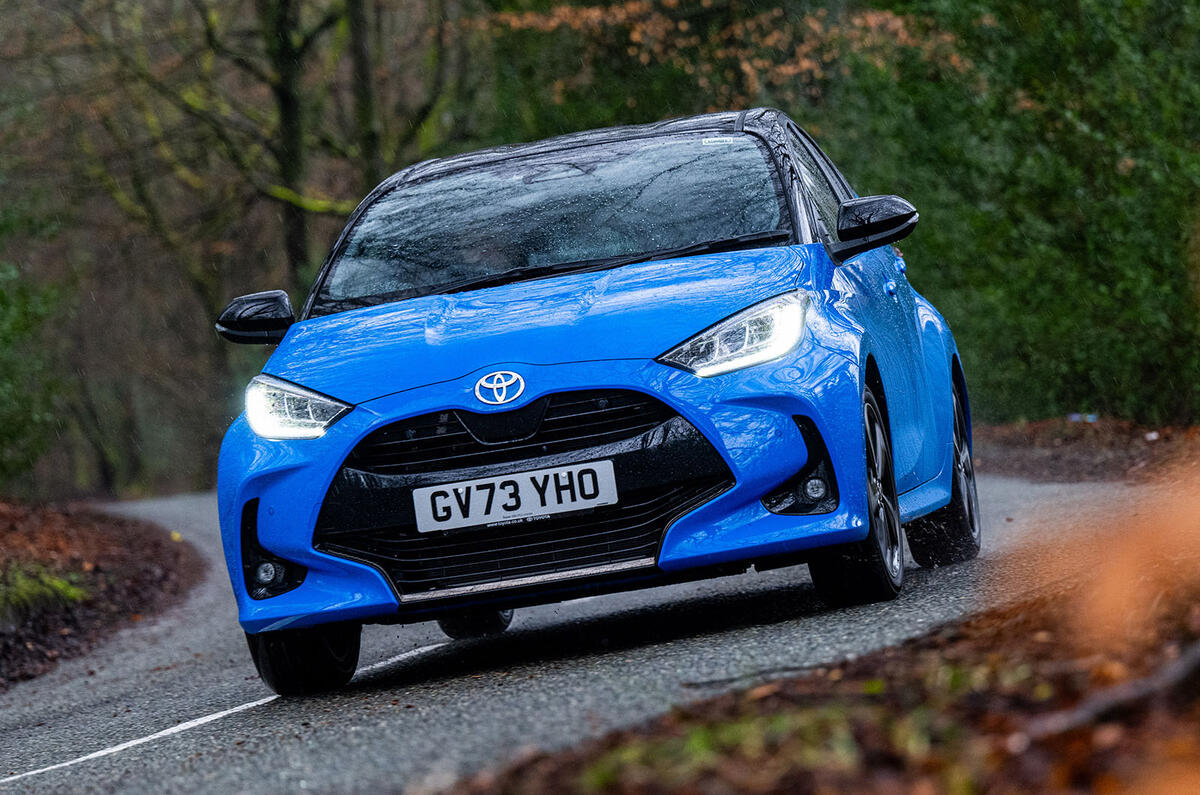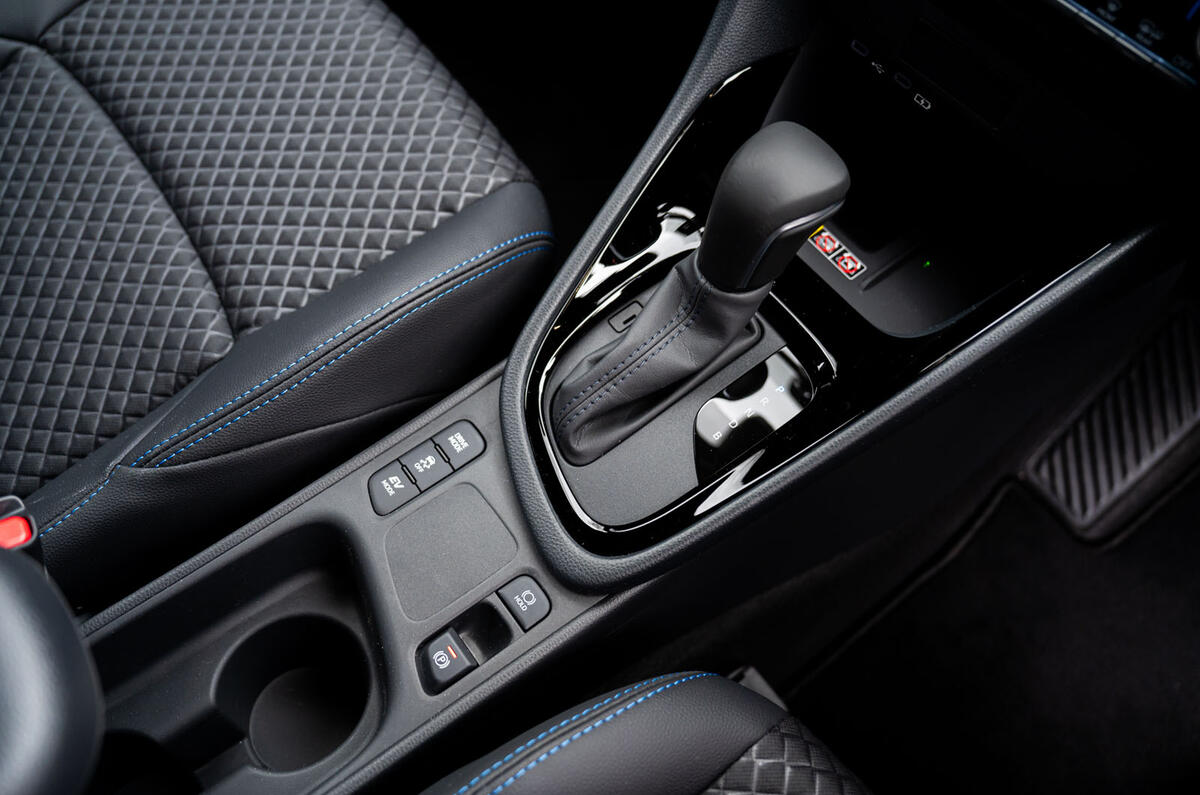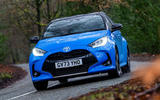Toyota claims to have improved visibility by setting the instrument panel lower and pulling the A-pillars further back relative to the driver.
We feel the overall efficacy of these measures is marginal where the view forward is concerned, but the Yaris certainly does feel spacious from within – at least for front-seat occupants, who are now set 21mm lower than in the previous-generation car.
Proper dials for the air-con are welcome in a world increasingly enamoured of touchscreens. You don’t really need to take your eyes off the road to use them.
The driver also benefits from adjustment for reach as well as rake in the steering column, so it is easy to find a comfortable and supportive position. The leather-trimmed steering wheel in the GR Sport is particularly nice to hold too and wouldn’t even feel out of place in, say, the Toyota GR Supra.
Toyota has moved away from its playful ‘binocular’ dial arrangement within the instrument binnacle, switching instead to a more up-to-date 12.3in digital set-up for higher-spec cars.
The digital instrument cluster’s graphics are good and owners can customise the dials to suit their own preferences.
It isn’t difficult to find hard plastics in the cabin (not least on the cheap-feeling door handles) but interesting fabrics, softer plastics and rubberised surfaces have been deployed among the various surfaces and storage cubbies.
It’s a shame Toyota didn’t use softer materials on the doors: the scratchy plastic on the top, coupled with the cheap fabric covering the armrest means it's hard to find a comfortable spot to rest your elbow.











































